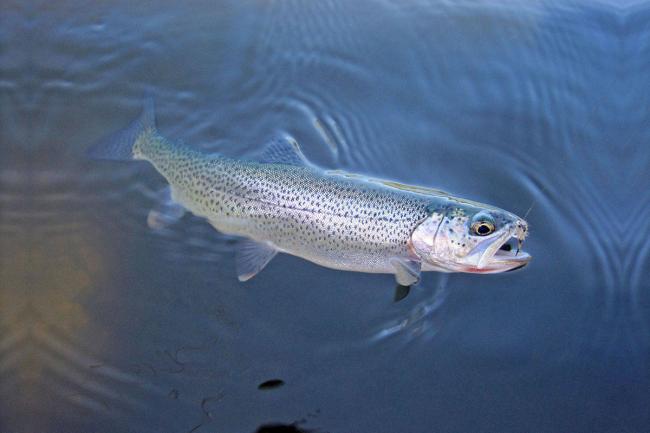Articles Menu

Jul. 10, 2019
Despite rainy weather, ongoing drought conditions on the North Island may reduce trout and coho numbers as low streamflows leave fish stranded and higher water temperatures snuff out insects that provide them with food.
“It is fairly unusual for the North Island to be this dry,” said Jaroslaw Szczot, senior aquatic ecologist with the provincial Ministry of Forests. “I think the fires last year proved that.”
The usual wet winter didn’t happen, and current low streamflows wouldn’t normally be seen until mid-August or September, he said. There’s also a groundwater deficit from last year.
The most affected fish species are those that do their rearing in the streams and rivers, including coho salmon, steelhead and cutthroat trout. Earlier this year, spring chinook were also affected.

| The Campbell River is shown on July 9, 2019. Drought conditions are affecting streamflow across the Island. Photo by David Gordon Koch/Campbell River Mirror |
“(The chinook) migrate in May, so typically they’ll have enough water,” he said. “This year it was a little bit different because we didn’t have the water in May.”
For habitat, trout prefer to sit in so-called “riffles” of high-velocity water, where insects hatch. But those are the first areas to dry up during a drought, Szczot said.
Riffles also produce food flowing into pools that serve as coho habitat, he said, and “there’s nothing coming in from the riffles.”
READ MORE: Conditions ‘very dry’ in Campbell River and across Vancouver Island despite rainfall
This also means that trout have nowhere to go except pools. As the coho and trout become concentrated in the pools, they will come into competition with each other.
Higher water temperatures also mean algae blooms may increase, reducing insect production that fish depend on.
“It’s basically a cascading effect,” said the Nanaimo-based scientist, who was preparing to visit the Sayward area to monitor flows on Wednesday morning.

| A screenshot from the B.C. Drought Levels Map, updated July 4, indicates very dry conditions across Vancouver Island. |
All of this could mean lower numbers of trout and coho. Most streams from Campbell River to Victoria have already been affected in this way for perhaps five years due to increased drought conditions, Szczot said.
The changes will ripple throughout the ecosystem, including possible shrinkage of wetland vegetation such as cattails and impacts on water-bound species like frogs and toads.
“We haven’t heard of any bigger animals being impacted,” Szczot added. But the changes may result in more frequent cases of animals like bears wandering around human-populated areas, he said.
“I know there’s a lot reports of black bears hanging around people, so that’s a possibility, that they’re running out of that wet, shady habitat and they’re just looking for other sources to cool down.”
[Catch and release cutthroat trout. Photo by Don Daniels]